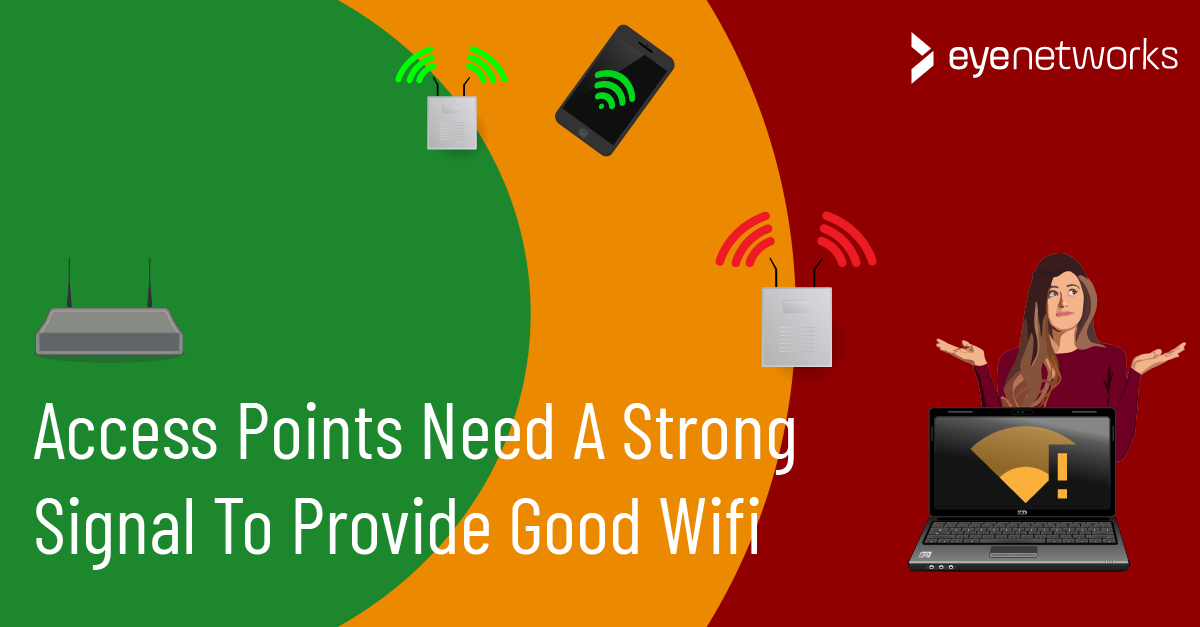The most common mistake you can make when setting up mesh wifi or wifi extenders is to place the devices where coverage is already poor.
Yes, it may seem logical: “Here, the mobile phone / laptop / iPad has problems connecting to the internet, so I should place another wifi device here”.
This may even look good when the new device has been set up: the wifi indicator on your mobile or laptop can now show a strong signal! The coverage from the new device is good!
Nevertheless, it is unlikely that you will now have fast and stable internet in your home, because what you have done is to move the coverage problem from the connected gadgets to the access point.
And a wireless access point that itself has poor coverage cannot perform well.
Where Should I Place the Mesh Device or Repeater?
First of all: We generally advise against wifi repeaters, and you can read more about why here: Five reasons not to buy wifi repeaters .
But regardless of whether you already have one or more repeaters or you are going to set up a recommended mesh network, the same logic applies:
Each access point must HAVE good coverage to PROVIDE good coverage and reliable performance.
Therefore, you should not place the mesh node or repeater where the coverage is poor. The new device should be at the outer edges of the field where the coverage is good, either directly from the router or from another mesh node. A good rule of thumb is to set the new access point approximately halfway between the previous node and the area with poor coverage.
This is the only way you can actually extend the good coverage.
An access point with poor coverage will simply never perform optimally. Worst case, you risk affecting the performance of the entire network.
You can read more about how it happens here: Bad apple: How one gadget with poor coverage can break an entire wifi network .
Optimal Placement of All Wifi Devices
How mesh nodes are optimally placed may vary slightly by manufacturer and mesh standard, but some rules of thumb are general.
All wireless access points are best placed:
- High up with a clear line of sight
- Never behind a TV or other electronics
- Within good coverage of the router and/or other mesh nodes
If you have major obstacles to the wifi signals in the home, for example a bathroom with steel reinforcement or a brick fireplace, it may be wise to place the access points in a triangular formation around the obstacle.
You can read more about which elements in a home are the most problematic to wifi here: 10 things in the home that interfere with and block wireless signals.
How Do I Know Whether Coverage Is Good Enough?
Then, of course, the big question is: How do I know that there is sufficient coverage? Where do I look?
This varies from product to product, but the vast majority of wifi products now have one or both of these:
- LED signals on the device
- An LED will typically light up orange or red – or flash – if the coverage is insufficient.
- Mobile app
- Here you should be able to see the quality of connection between mesh nodes, or between the router and repeater.
- Some will also actively push you in the direction of a better connection.
The Easiest Way
We at Eye Networks are happy to recommend eero wifi, which we ourselves sell both to Nordic internet providers and to private individuals in Norway.
When you set up multiple eero devices in a mesh network, you use the eero mobile app, and the app will actively prevent you from placing a mesh node where it will not get sufficient coverage.
